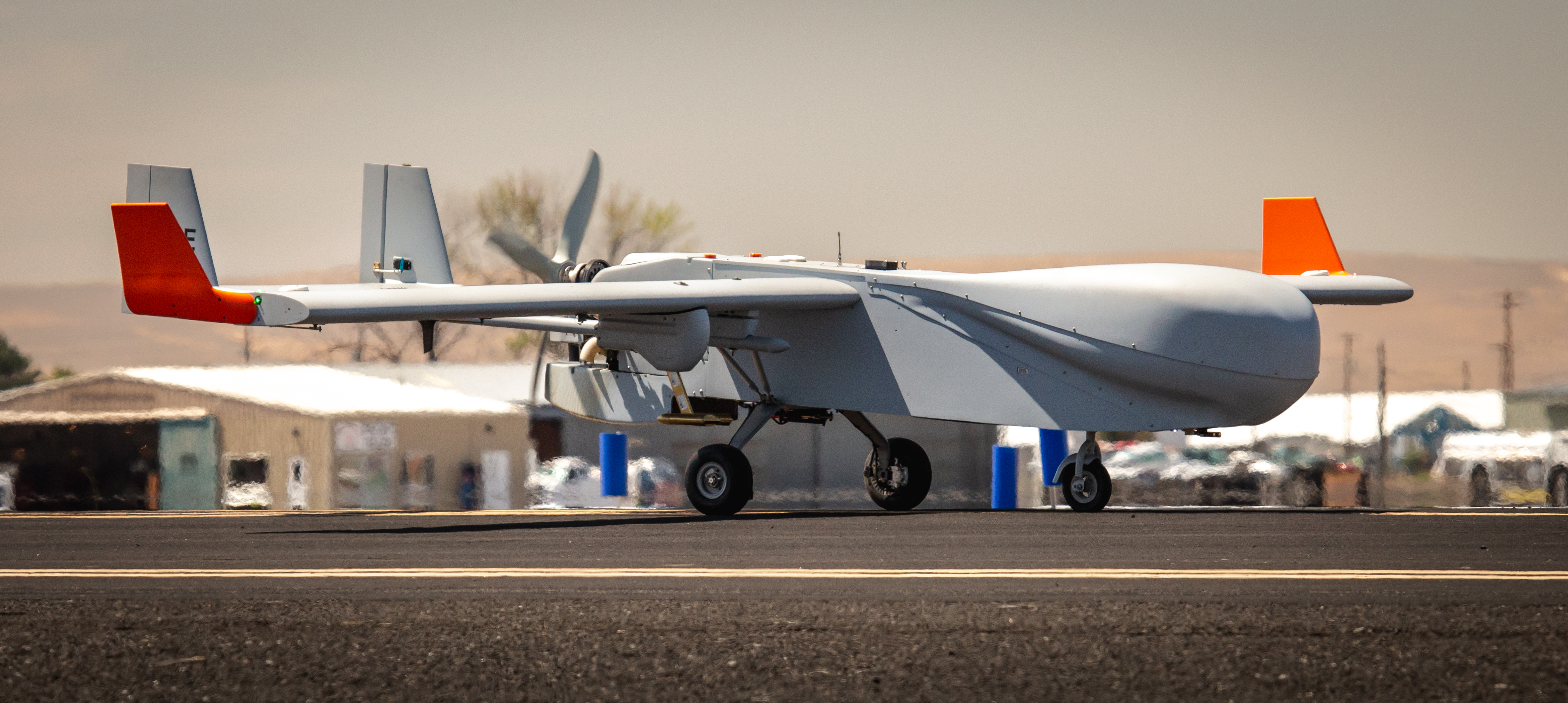Uncrewed Facilities
Recent advances in uncrewed aerial systems (UAS) coupled with changes in the regulatory environment for operations of UAS in the national airspace increase their potential value for atmospheric research. As a result, the Atmospheric Radiation Measurement (ARM) User Facility is expanding its use of UAS, including uncrewed aerial vehicles (UAV) and tethered balloon systems (TBS).
Operational Requirements
Uncrewed Aerial Systems

The ArcticShark is a fixed-wing vehicle with a 22-foot (6.7-meter) wingspan and a max gross weight of 650 pounds (300 kilograms). The payload configuration is flexible with multiple internal payload bays and four external hard-point wing stores. The manufacturer has rated the ArcticShark to fly altitudes up to 18,000 feet (5,500 meters) mean sea level for a flight duration of eight hours (subject to payload configuration).
The first user-driven ArcticShark campaign took place in May 2024 around the Southern Great Plains atmospheric observatory. Future ArcticShark flights will be proposal driven.
Previously deployed, the DataHawk II small uncrewed aerial systems (sUAS) were the first sUAS at the AAF and were built by the University of Colorado Boulder. The DataHawk II weighed 3 pounds (1.3 kilograms) with a wingspan of 3 feet (1 meter) and had a static payload measuring location, altitude, pressure, temperature, humidity, wind speed, and surface temperature. The DataHawk IIs were flown from 2016 to 2018 before the AAF discontinued use. Meteorological data from the DataHawk are available in ARM’s Data Discovery.
Tethered Balloon Systems

Tethered balloon systems (TBS) provide the capability of deploying a significant instrument payload of up to approximately 110 pounds (50 kilograms total) on a repeated basis through the atmospheric boundary layer to elevations of approximately 4,920 feet (1,500 meters) depending on meteorological conditions and regulatory restrictions.
ARM currently operates three TBS. The typical balloons used are Skydoc Model #28 aerostats. These systems are operated during missions with typical durations of two weeks. In a typical year, ARM expects to conduct approximately six to eight TBS missions (about two to three missions/system/year). The location and number of deployments are selected a year in advance around the end of the calendar year. The location of these deployments will be rotated among ARM observatories according to community needs and opportunities presented by mobile facility deployments.
Under most conditions, TBS are restricted to flying below cloud base; however, ARM conducted many flights within clouds at Oliktok Point, Alaska, between 2015 and 2020. These flights occurred in restricted airspace that ARM managed at the Oliktok site. The possibility of future in-cloud flights must be studied on a location-by-location basis.
TBS Resources
Keep up with the Atmospheric Observer
Updates on ARM news, events, and opportunities delivered to your inbox
ARM User Profile
ARM welcomes users from all institutions and nations. A free ARM user account is needed to access ARM data.


















